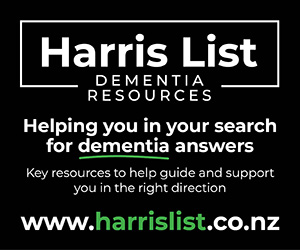The current Health Reforms promise a greater equity to health access for all New Zealanders. The end to Post Code health has been a key advocacy priority for Grey Power over recent years.
For too long those needing hip replacement or cataract surgery, for example, have been at the mercy of the “eligibility” criteria of the local DHB. For some the barriers have been low, while in those DHBs with a higher incidence of retirees often had far higher criteria resulting in significant morbidity for those disadvantaged.
DHBs have gone… but they still exist now as Districts with the same boundaries. There are now four regions within NZ for coordination of services – same boundaries as before, but with a stronger remit to share the resources within their Districts to ensure better health outcomes and equity.
There have been some encouraging initial signs that this is starting to work but the reforms will take a couple of years to really bed in so we can evaluate their true impact on better health outcomes for all New Zealanders.
So, with the removal of elected Boards to oversee each DHB, have local communities lost a voice in the delivery of healthcare that meets the needs of their local communities? Is the whole health system now run by bureaucrats who are no longer answerable to the communities they serve?
It is easy to feel that we are being bulldozed into a system that has no accountability and relevance to the needs within our local communities, until one explores the intended structures within Health New Zealand. Many are probably unaware that there is a new health entity called a Locality.
Localities
“The development of localities across New Zealand is a fundamental part of the reform of the country’s health system. This place-based approach to planning and delivering health and wellbeing services is an exciting opportunity to embed a stronger population health focus across the health system.
Localities are geographic areas that make sense to the people that live there. The exact geographic size, or population it serves, will change across the country, and will be determined through engagement with the community. The boundary lines may follow existing boundaries defined by local government or mana whenua; it will simply depend on what works best for each area.
Once the boundary is determined, people and organisations with influence over community health and wellbeing will collaborate on what outcomes they want to see for their community. This will include Iwi-Māori Partnership Boards, and ideally will include health and social care agencies and community organisations.” – Localities Update for the health sector April 2022. Health New Zealand1
It is anticipated that eventually there will be 60-80 localities around the country, with nine locality network pilots announced and rolled out from July 1. The nine network areas for the pilots are: ōtara/Papatoetoe; Hauraki; Taupō/Tūrangi; Wairoa; Whanganui; Porirua; West Coast; Eastern Bay of Plenty & Horowhenua.2
I am optimistic that these Localities will provide better health solutions, particularly for rural towns that are some distance from their local major hospital.
For this reason, I would encourage Grey Power Associations to become engaged in the formation of Localities – your community voice on solutions is important.
A local community’s journey to establish a Locality
In Katikati, Western Bay of Plenty, the local Health Trust has embarked on a journey to potentially establish a Locality in a growing rural town of around 5500 inhabitants. Katikati is in the centre of Kiwifruit and Avocado orchards and connected to the local Tauranga Hospital via a stretch State Highway 2 that has one of the highest accident rates nationally and is undergoing a prolonged period of road works to improve safety.
Journeys to the hospital take 35 minutes on a good day without roadwork or other traffic delays. Nearly 40 percent of Katikati residents are over the age of 65, with increasing health needs, so easy access to services is important.
The only medical centre has had closed books for significant periods over recent years and numbers of residents have no GP, or have had to go further afield to Tauranga to access a GP service.
The Trust is working with a variety of other community organisations, including St John, the local Runanga, and including Grey Power, as well as senior local health administrators, and local government.
Some of the issues to arise in the first few months of work include defining appropriate boundaries for the proposed locality, accessing health data specific to the defined locality; accessing protocols for a local community health needs assessment; engaging with all the health providers servicing the area – many of which are located outside the area and may service subpopulations – eg Pacifica, homecare etc.
We feel we are exploring unknown territory with this journey, but learning more at each step of the way. If you are interested in exploring the road to establish a Locality in your area, or are involved in one of the existing pilot Localities we would be happy to share experiences. Contact David Marshall on 022 185 4263.




